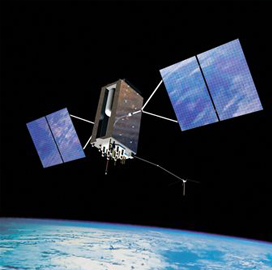 A Lockheed Martin-built legacy U.S. Air Force satellite has begun to provide communications services for the National Science Foundation‘s South Pole-based Amundsen-Scott Station.
A Lockheed Martin-built legacy U.S. Air Force satellite has begun to provide communications services for the National Science Foundation‘s South Pole-based Amundsen-Scott Station.
Lockheed said Tuesday the Defense Satellite Communications System III B7 replaced NSF’s decommissioned Geostationary Operational Environmental Satellite-3 in June to establish communication and data links between Amundsen-Scott Station and the U.S. Antarctic Program facility in New Zealand.
DSCS III B7 works to provide 30-megabits-per-second internet access for 3.5 hours a day and has recently supported  telemedicine operations at the South Pole station, Lockheed added.
The legacy satellite originally has  a 10-year design life and was launched on July 31, 1995, as part of the Air Force’s DSCS constellation.
Lockheed provides sustainment services for DSCS, the Advanced Extremely High Frequency system and Milstar blocks I and II for the DSCS constellation through the Air Force’s Combined Orbital Operations Logistics Sustainment program.




